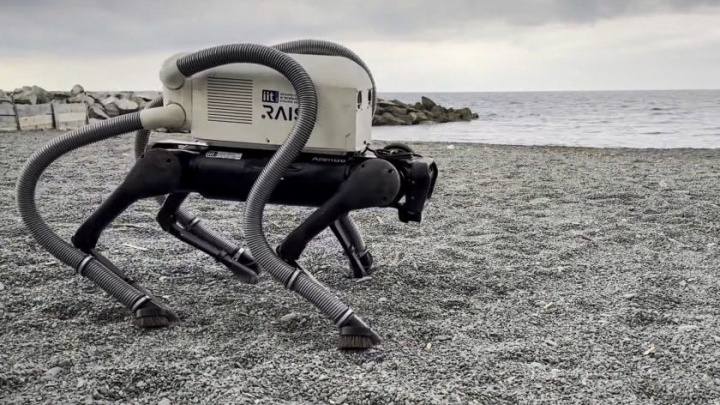Beach-Cleaning Robot Dogs: Meet VERO
Researchers at the Italian Institute of Technology (IIT) have developed VERO, an innovative robot dog equipped with vacuum cleaners attached to its feet, designed to clean beaches and other public spaces, with a particular focus on tackling pollution caused by cigarette butts.

The Problem of Beach Pollution
Beach pollution is a multifaceted environmental issue involving numerous harmful substances that contaminate coastal areas. These pollutants range from visible debris like plastic bottles and cigarette butts to less obvious contaminants such as sewage, pesticides, and excess nutrients from fertilizers. The impact of beach pollution extends beyond aesthetics, posing significant threats to marine ecosystems and human health. Litter, especially plastic waste, is one of the most visible forms of beach pollution, with an estimated 4 to 12 million metric tons of plastic entering the oceans annually. This pollution affects marine life, with scientists estimating that over half of the world's sea turtles and nearly all seabirds have ingested plastic. Addressing beach pollution requires a combination of policy measures, improved waste management, and individual actions, including reducing single-use plastics and participating in beach cleanups.
Development of the VERO Robot Dog
VERO (Vacuum-cleaner Equipped RObot) is a state-of-the-art quadruped robot developed by the Dynamic Legged Systems (DLS) lab at the Italian Institute of Technology (IIT) in Genoa. Built upon the AlienGo platform from the Chinese company Unitree, a machine costing around $50,000, VERO is equipped with a commercial vacuum cleaner mounted on its back and custom, 3D-printed nozzles connected via hoses to the robot's feet. The robot's primary mission is to combat pollution from cigarette butts, which account for over 4 trillion of the approximately 6 trillion cigarettes smoked globally each year being discarded into the environment. VERO represents a fusion of advanced robotics and environmental stewardship, offering a novel approach to keeping beaches and public spaces clean.
How VERO Operates
VERO utilizes depth cameras and a convolutional neural network (CNN) to autonomously detect and locate cigarette butts scattered across various terrains. The robot's operation begins when a human operator designates an area for cleaning, after which the robot calculates an optimal path to cover the entire zone. As VERO traverses the littered area, it activates the vacuum nozzles on its feet to collect the trash without interrupting its locomotion. This innovative design allows the quadruped robot to use its legs for both transportation and cleaning tasks simultaneously, a capability not common in legged robots. VERO's visual servoing technique ensures precise and efficient cleaning using real-time feedback from its vision sensors.
Effectiveness and Environmental Impact
Tests have shown that VERO can autonomously collect nearly 90% of cigarette butts in various environments, potentially surpassing human cleaning efforts. This efficiency addresses a significant environmental problem, as each discarded butt can leach over 700 toxic chemical compounds into ecosystems. The robot's ability to work continuously, limited only by battery life, offers a significant advantage over manual labor. VERO's versatility in navigating challenging terrains, such as beaches, narrow alleys, and stairs, further enhances its potential impact on environmental conservation efforts.
Future Applications and Challenges
Beyond beach cleaning, researchers envision broader applications for VERO's technology, including spraying weeds in agricultural fields, inspecting cracks in infrastructure, and placing nails or rivets in construction projects. However, the robot faces challenges, such as reduced speed and agility compared to standard Unitree robots, the risk of vacuuming up sand along with litter on beaches, and its high cost, which may limit widespread adoption. Despite these hurdles, VERO's adaptability could revolutionize smart robotics across multiple industries, potentially reducing manual labor and ushering in a new era of automation.